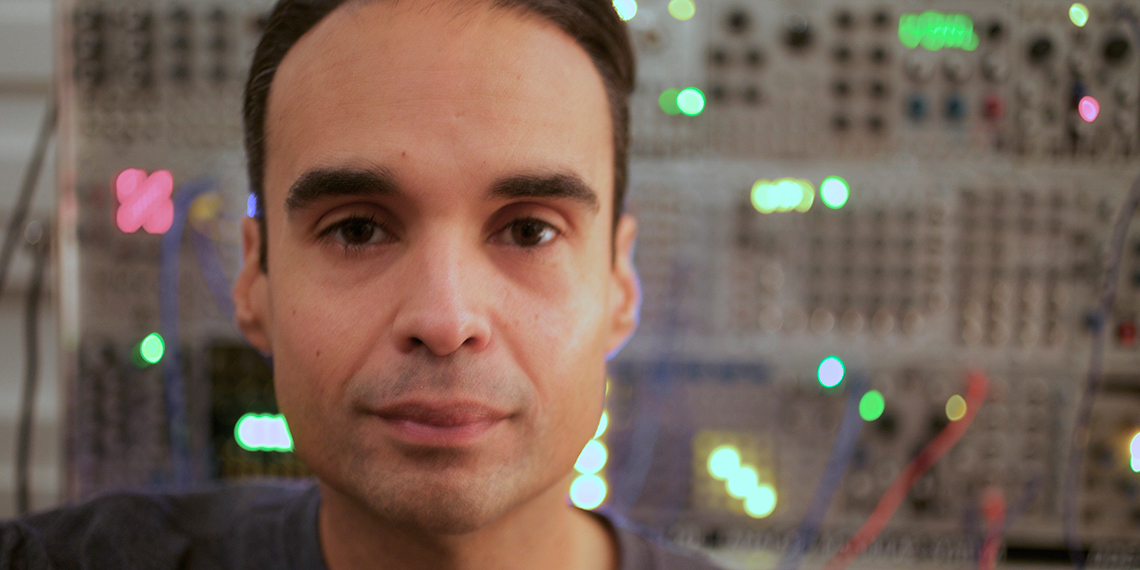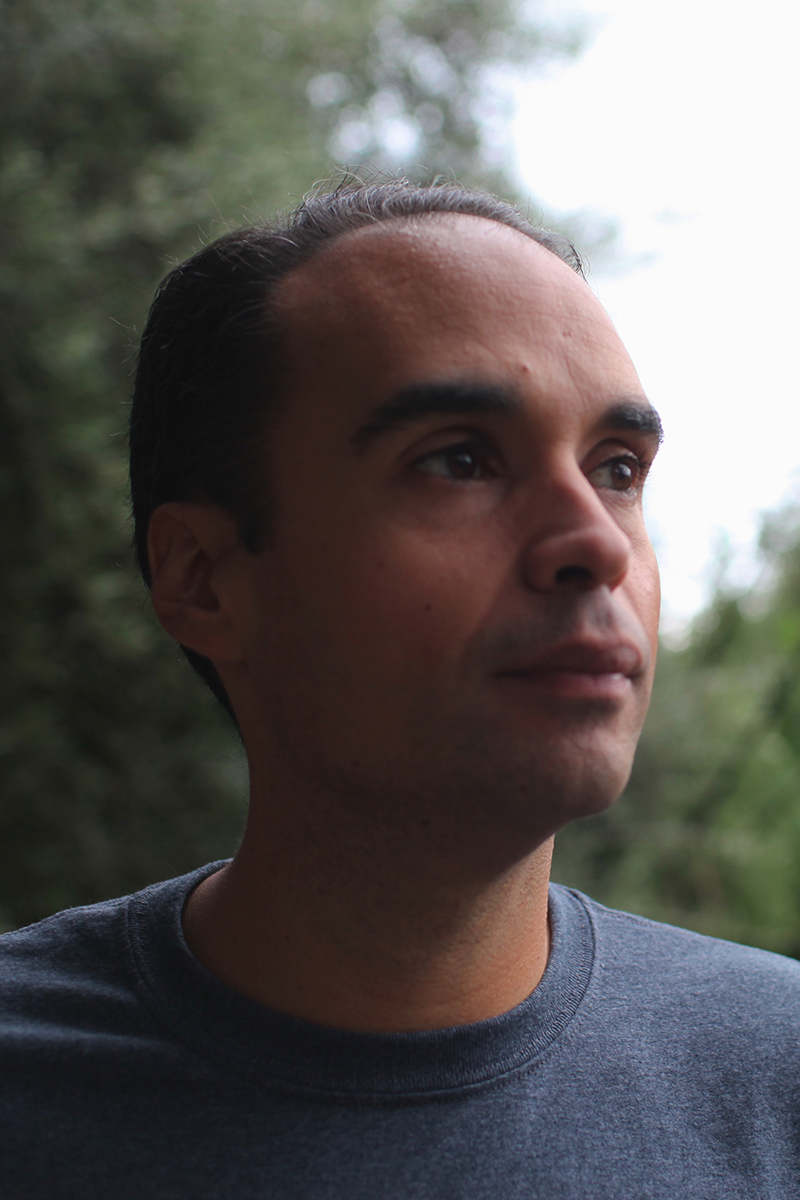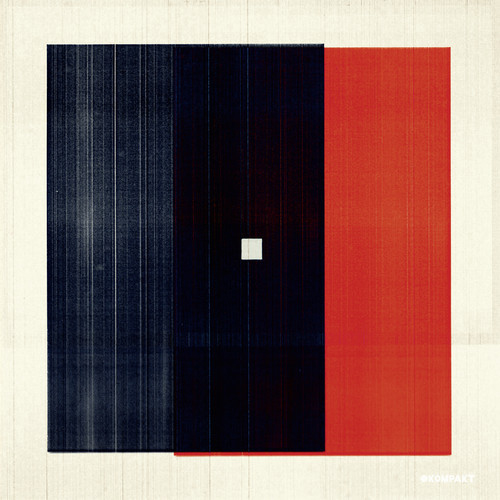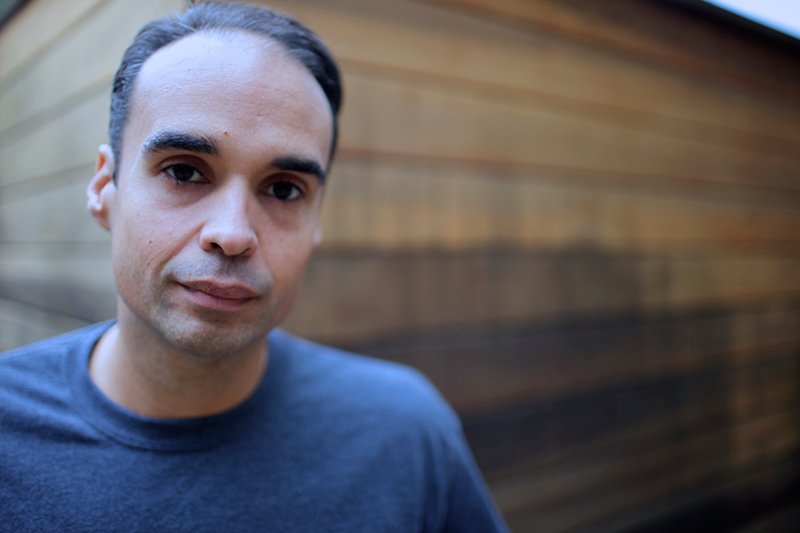Ask the Experts: John Tejada
The LA techno veteran answers reader questions and opens up about his production process.

Ask the Experts: John Tejada
The LA techno veteran answers reader questions and opens up about his production process.

John Tejada knows techno. In truth, the LA-based producer knows a lot more than that, as he’s been releasing music since the mid ’90s, but techno is essentially his calling card. Though he continues to oversee and contribute to his own Palette label, Tejada has also found a home at Kompakt, and the stalwart German imprint will be issuing his latest LP, Signs Under Test, next week. Over the years, we’ve spoken with Tejada on several occasions, exploring numerous facets of his music and artistry, so this time, we decided to switch things up and let our readers have a chance to pepper him with questions. As always happens with our monthly Ask the Experts series, the XLR8R audience sent in queries, and Tejada has selected his favorites to answer. In the process of responding, he’s covered a lot of ground—much of it technical—but has also found time to touch upon his relationship with Detroit, the importance of compressors, and exactly what’s required to make a good techno track.
How did you make the Detroit connection and how much did that help you?
Mike
When I started Palette Recordings in the fall of 1996, one of the US distribution companies was Seventh City in Detroit, which was owned by Daniel Bell. When I had test pressings of Palette #1, I phoned them up and was speaking to a guy named Theo Parrish (a lot less known at the time) who ordered a couple boxes. I believe it was after the second Palette or so that I would finally speak to Daniel on the phone from time to time, and eventually, he asked if I had some music around—The Blue Dawn EP was released pretty soon after. I really believe this first record of mine on Seventh City and Daniel’s support gave me validation in the Detroit scene, which wasn’t so easy for non-resident artists, not to mention being part of an amazing roster of Seventh City artists. With the world watching Detroit, this definitely let me reach the ears of people worldwide.
Do you mix down your own tracks and do you feel that producers have a lot to lose by not focusing on this aspect of production?
Thomas
I work on my songs from start to finish. In my experience, I feel most producers I know focus on [the mixdown] sometimes even more than the music. It’s an interesting question because this is the part of the process myself and a lot of friends sort of dread. The reason is, you get so attached to the sound of sounds you’ve created that it’s hard to see them from a distance and make the proper changes resulting in a mix that could be better. This is also the reason why it’s beneficial to have someone else master your music instead of doing it all yourself. (When available, I feel like a mixdown can also benefit from another set of ears.) Some mastering engineers offer stem mastering, which is when you send over four or five stereo-bussed groups and let the mastering engineer put them together, which may end up giving the track some new dynamic or space the artist may not have heard. In the bigger music world of rock and pop, historically there would be writers, producers, mixing engineers, and mastering engineers. It traditionally wasn’t the duty of music makers to take care of all these processes, but the way things have progressed, more and more people do everything themselves. This is a positive as well, since it’s made it possible for people to release finished-sounding music, but I find it takes a lot of practice to do everything yourself successfully. While I feel it is worth studying all aspects of production and being proficient in all the steps required to finish a piece of music, I also think a second pair of ears you trust can be really valuable in the process.

What’s the real importance of a compressor? Some dance producers say it is the most important thing, others say that in dance music there is no need for compressors, as dance tracks don’t have much difference in volume. In my little experience, compressors are good for sidechaining or creating some effects using fast attack, etc. But it hasn’t helped much to create “big” beats; distortion plug-ins actually seem better suited to beef up a beat. So, I still have doubts about the compressor. Please give a little class about it. If possible, I would like to know your methods to make the different instrument sound layers sound separate, and if it is necessary for a dance track have a 3-D aspect.
Eduardo
First off, I feel its worth mentioning that everyone is going to have a different opinion on this and it’s really up to taste. If it sounds good to you, go with it! But having said that, here are some tips which I’ve learned along the way that help me make the right decision depending on the issue.
Like you point out, traditionally a compressor is mostly helpful with voice or acoustic instruments that have a large range in volume by raising quiet parts and controlling the loud parts. Now exactly as you say, when you have an electronic instrument or sample, unless you’ve done some accidental velocities (which are easier to fix by adjusting those rather than compressing), the volume is going to be steady, in which case the compressor becomes more of a sound design tool rather than a volume tool. At times, it can be used, for example, in a bassline, where one note sounds apparently louder, but again, in this case I would first try to notch out that frequency with a good parametric EQ. You can reference the Bob Katz scale of notes to find the offending note to notch out. EQs like DMG’s Equilibrium have this built in and most have a graphic analyzer built in to find the offending notes/frequencies.
Another use now is using the attack and decay as an enveloper for the sound. This is helpful on kicks and basslines and probably my biggest use if I do reach for a compressor. Hardware compressors and now many software emulations add harmonics, which give the sound some color or character, so that can be a different sound design tool for thickening. However, be aware that throwing these on tons of tracks can add up to an unnecessary build up of harmonic content, ruining a mix.
Compressors can also seem to clean up a muddy signal. The compressor seemingly smoothes out these areas because they are probably the loudest. When attenuated by a compressor, the energy of these frequencies gets turned down, making a bad low end sound appear a bit more balanced, but again, I would use the EQ first before I reach for the compressor, as it may be more beneficial to notch out the offending frequencies rather than introduce the character of a compressor, possibly sacrificing transients.
The sidechaining effect you mention is the most dramatic example of using a compressor as a sound design tool and has made plenty of classic tracks shine. Nowadays, plug-ins like volume shaper can also do this type of thing without introducing too much pumping or changing the frequency balance of the signals you are applying the sidechain to. It depends what sounds better, but even drawing in volume automation on a bus and copying to every measure can be a good alternative.
So after all that, to answer your question, the compressor has many possible uses in modern dance music. In my opinion, it’s more useful as a sound design tool, but there are many possible applications for this. It is definitely a tool to have in your arsenal and to study and get to know, but I would give equal importance to learning what you can do with a good parametric EQ, as it may be a better problem solver in many cases.
The 3-D aspect I believe comes from giving each instrument in the mix its own place. Notching out frequencies and choosing what frequency range certain instruments are going to fit in will help quite a bit to give you a clear image of your mixdown. When tracks all pile into the same frequency range, that is where all the problems happen. You can think of it like an orchestra. Each section of the orchestra fits into a different frequency range. So when creating electronic music, it’s beneficial to fill the stage with different instruments that sound good together rather than a bunch that all sound more or less the same in the same frequency range. Also, referencing productions you like and paying attention to where the elements really sit might surprise you.

What are your production methods in the pre-production stage? Do you have any mixing tips you can give us?
Cream Theruler
Usually, I’m building all my sounds from the ground up in the production stage. Even simple kicks I never end up using again, just because there are small adjustments (like tuning) that end up fitting the sound to the song better. I also play an acoustic drum kit and these also need to be tuned up to fit the style of music or the piece being played, so for electronic sounds, I feel the same is true and I try to make the sounds fit the key of the song and other sounds.
I noodle with synths quite a bit to get my initial idea happening. Generally, I’m using hardware instruments, simply because I enjoy those rather than an emulation of those. These days, I’m getting back into doing something I haven’t done in about 20 years, which is just making loads of little sounds and sampling them to build something with, instead of capturing large stems. I’ve realized with long stems it becomes harder for me to do anything with them. A lot of older tracks I really like just do really creative things with lots of samples. I’ve always had something against just sampling bits of gear (instead of recording long tracks of each synth), but now, I’m remembering how fun it is. So in general, my pre-production just consists of creating lots of sounds for the piece I’m going to make.
As for mixing tips, something I am still working very hard on is filtering out the frequencies I don’t need so that the mix has room to breathe. The easiest start is to use a high-pass filter to filter out the lows and some highs (with a low-pass) you may not need. That has helped me a lot to get some more clarity out of the mix. I’ve also started to rely on a good pair of headphones to help reference the bass frequencies, as my room and most rooms are not perfect acoustic listening spaces, so this has also helped me quite a bit recently. The last thing to mention would be to find a second pair of ears you trust, which could just be a mastering engineer. Sometimes they can also tip you to a problem in the mix and you can go back and fix it before final mastering happens. This can be a lot more beneficial than having the mastering engineer try to fix it.
I also try to reference other music I like the sound of and practice listening to what is actually happening. I find that what I remember the track sounding like and what it actually sounds like can be quite different. Tracks in my memory that sound absolutely huge may have a really understated element to give the track some room, but in my memory of it, all sounds are massive. So using other people’s works as a reference can give you some creative ideas on how to put it all together.

What soundcard/interface are you using and what is your weapon of choice regarding analog to digital conversion and vice versa, especially when it comes to accuracy and quality?
Tim
I’m using a UAD Apollo interface, which offers me a lot of options and nice routing, which is working well for my workflow. With converters, however, the sky is the limit. It seems you really get what you pay for and there’s a reason the price keeps going up and up and up. I’ve demoed some higher-end converters here, and there is surely something to be said for [using them]. However, in the end, it’s more about the music making and ideas; something well put together is going to be just as great with a more entry-level conversion system.
What do you think makes a good techno track? I’m curious what your opinions are on this since you have been making music for so long and have seen many styles/artists come and go.
Peter
I feel there are certain fundamentals at the core of a good techno track. The classics seem to share a certain frequency balance and energy. I also tend to be quite amazed by the simpler tracks rather than the dense ones. For me, this is the most difficult thing to master. Most classic tracks I love have just a couple of elements going on, but the way it was done is just absolutely magical.

